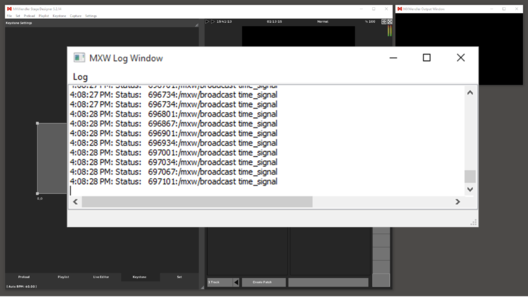Tutorial Time-sync and sending IO Commands over OSC Protocol
In this tutorial we will sync two MXWendler systems and simultaneously control the playlist of both the computers by sending IO commands over OSC protocol.
{{#mpdftags: pagebreak}}
Pooling MXWendler systems via time synchronization
Setting the network:
- To communicate over the OSC protocol, the machines have to be connected to the same network.
- The time signal will go from the computer with the lower IP (Master) to the computer with the higher (Slave).
- In our case the Master has the 192.168.4.32 IP address and the Slave has the 192.168.4.91.
{{#mpdftags: pagebreak}} Setting the software on both the computers:
- 1. Start MXWendler and go to:
- Menu - Settings - IO - OSC
- 2. Check Receive OSC (A)
- 3. Set port to 7000 (B)
- 4. Check Log received data (this allows the Log Window to display the data stream that the computer is receiving) (C)
- 5. Check Broadcast and receive time and Forward IO Events (D)
Now all the machines will send their time until they start to receive packets from a machine with lower IP, then the ones with an higher IP will switch to receiving.
- 6. Open the Log Windows of the two computers: the flow of time commands should be displayed on the Slave system.
The 2 MXWendler systems are now connected and synchronized.
{{#mpdftags: pagebreak}}

{{#mpdftags: pagebreak}}
Simultaneous control of 2 playlists with IO Commands via OSC
Set a playlist on both the computers.
Create an event on the slave computer to control the playlist's play button, for example with the right arrow key.
- eg. Menu - Settings - IO - DMX/MIDI/Keyboard Events - Keyboard
Set an IO Command in the Master system's playlist.
- Right click on the first cell of the second cue, select "Send IO Command" and then double click to write the command: "Keyboard (right)".
Now, by pressing the play button on the Master computer, the playlist will be simultaneously executed on the Slave.


